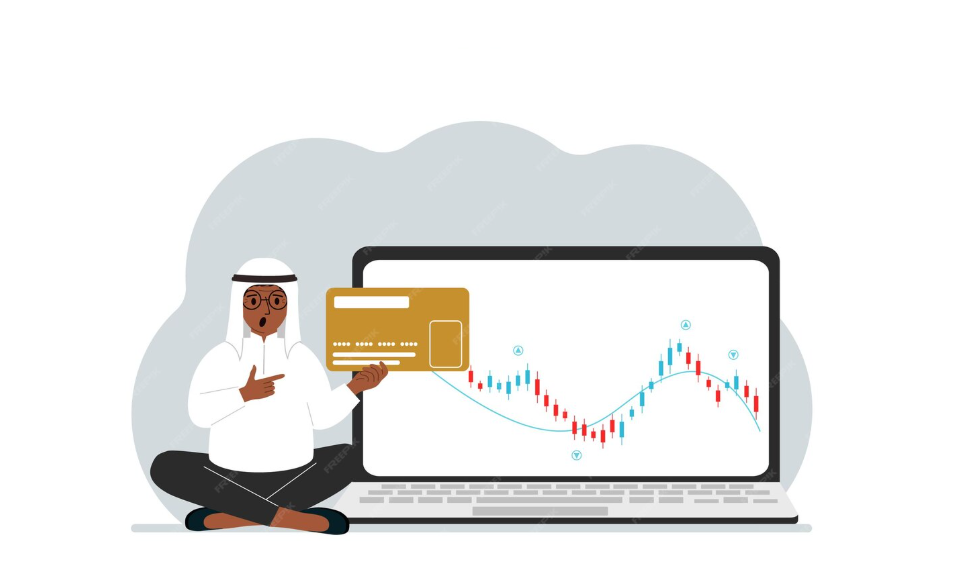
How Pakistan’s 2025 Circular Debt Deal A Boost for Economy and Stock Market
Pakistan has taken a bold and unprecedented step to address its most pressing financial challenge, the power sector’s circular debt in 2025. On September 24, 2025, the government finalized a Rs1.225 trillion circular debt financing agreement with a consortium of 18 local banks, aiming to significantly reduce the mountain of liabilities that have long crippled the country’s energy sector and strained the national economy.
This landmark circular debt deal is not just about clearing dues; it carries direct implications for the Pakistan Stock Exchange (PSX), investor confidence and the broader investment climate in Pakistan. In this article, we break down the structure of the agreement, analyze the potential benefits for the stock market and explain why both local and foreign investors should pay close attention to this reform
Pakistan Circular Debt Agreement 2025
The recently signed Pakistan circular debt agreement 2025 is structured around two major components that directly target the country’s chronic power sector liabilities:
- Restructuring of Rs659.6 billion in existing loans held by the power sector, easing the immediate liquidity crunch.
- Fresh financing of Rs565.4 billion provided by local banks under sovereign guarantees, strengthening the sector’s financial base.
The financing will be disbursed through an Islamic finance facility at a concessional rate of three month KIBOR minus 0.9%, which is significantly cheaper than what the government has paid in previous debt arrangements. Repayments are scheduled over six years in 24 quarterly installments, reducing short term fiscal pressure and providing long term stability to the energy sector.
To ensure sustainability, the government has also approved a Rs3.23 per unit power surcharge, creating a dedicated revenue stream for servicing the debt and reinforcing investor confidence in the government’s commitment to power sector reforms.
Why Circular Debt Deal Matters for the Economy
The Pakistan circular debt crisis 2025, currently estimated at over Rs2.6 trillion, has long been a chronic challenge for the economy. It reflects unpaid obligations to independent power producers (IPPs), fuel suppliers and transmission companies, creating a liquidity trap across the entire energy chain.
Through this new Rs1.225 trillion circular debt restructuring agreement, the government aims to:
· Restore liquidity in the energy sector, enabling timely payments to power producers and fuel suppliers.
· Ensure consistent electricity supply, reducing the frequency of load shedding and power disruptions.
· Reduce fiscal stress on the government budget by spreading repayments over six years instead of bearing them upfront.
As a result, the deal is expected to bring stability to Pakistan’s power sector, while also contributing to industrial growth, export competitiveness and overall GDP expansion. By directly addressing the Rs2.6 trillion debt challenge, the government is signaling a stronger commitment to economic reforms, which can also enhance foreign investor confidence in Pakistan’s markets.
Impact on the Pakistan Stock Exchange (PSX)
The impact of Pakistan’s circular debt deal on PSX has already started to show. On September 25, 2025, the benchmark KSE-100 index rose by more than 300 points, reflecting investor optimism that this Rs1.225 trillion agreement could unlock growth and reduce systemic risks in the economy.
Here’s why the Pakistan Stock Exchange is likely to benefit further:
1. Banking Sector Gains: Since 18 banks are directly part of the deal, their exposure is now backed by sovereign guarantees. This reduces default risk, strengthens balance sheets and is highly positive for banking sector stocks in Pakistan.
2. Power Sector Relief: Independent Power Producers (IPPs) listed on the PSX will experience improved cash flows as their outstanding payments are cleared. This boosts their dividend paying capacity and lifts investor sentiment.
3. Energy Intensive Industries: With improved liquidity in the power sector, electricity supply becomes more reliable. This directly benefits energy dependent industries like cement, steel and textiles, whose shares are actively traded on the PSX.
4. Market Confidence: The circular debt issue has long been a “cloud of uncertainty” for investors. By addressing it head on, the government signals seriousness in tackling structural economic problems, thereby boosting domestic and foreign investor confidence in the Pakistan stock market.
Impact of the Circular Debt Deal on Investor Confidence in Pakistan
The Pakistan circular debt restructuring agreement 2025 opens several attractive investment opportunities in Pakistan, benefiting both institutional and retail investors.
Here’s how:
· Short Term Trading Gains: In the immediate aftermath of the deal, banking and power sector stocks on PSX are likely to see strong bullish activity. Active traders can capitalize on this momentum for short term trading gains.
· Medium Term Value Creation: The improved financial health of energy companies will reflect in stronger quarterly earnings. This creates consistent medium term value growth opportunities for investors seeking stable portfolio expansion.
· Reduced Risk Premium: Historically, Pakistan equities have carried a high risk premium due to macroeconomic instability. With the government addressing the circular debt bottleneck, investors can expect reduced market volatility and stronger sectoral resilience.
· Improved Credit Ratings and Foreign Inflows: International rating agencies often flagged circular debt as a major weakness in Pakistan’s economy. By implementing this credible restructuring plan, Pakistan’s sovereign risk profile improves, making the market more attractive for foreign investor inflows.
Challenges Ahead After Pakistan’s Circular Debt Deal 2025
While the Rs1.225 trillion circular debt restructuring agreement is a milestone, execution will determine its long term success. Key challenges that investors, policymakers and businesses need to closely monitor include:
1. Tariff Adjustments
The proposed surcharge mechanism must be implemented effectively. However, any political resistance to higher electricity tariffs could disrupt repayment flows, directly impacting the sustainability of the deal.
2. Governance Reforms
Unless inefficiencies in distribution companies (DISCOs) are addressed, circular debt could re-emerge. Stronger governance, transparency and loss reduction reforms are essential to prevent a relapse.
3. Banking Sector Exposure
Although sovereign guarantees provide short term confidence, the government’s excessive reliance on banks for deficit financing poses risks. It can crowd out private sector credit, reducing capital availability for businesses and investors.
4. Investor Vigilance
For investors, optimism is warranted, but long term positions require careful monitoring of:
· Policy execution
· Tariff collection efficiency
· Quarterly repayment updates
Staying informed will help investors manage risks while capitalizing on opportunities.
Azee Expert Opinions on Pakistan’s Circular Debt Deal 2025
Azee Securities experts believe that the Rs1.225 trillion circular debt agreement 2025 is a breakthrough reform for Pakistan’s struggling power sector. However, they emphasize that the real test lies in its execution. While the financing arrangement provides immediate relief by restoring liquidity and easing fiscal pressure, experts caution that without strong governance reforms in distribution companies (DISCOs), the risk of circular debt resurfacing in the future remains high.
According to Azee experts, the agreement is credit positive for both the banking and power sectors. With sovereign guarantees backing the exposure of local banks and timely payments reaching independent power producers (IPPs), investor sentiment on the Pakistan Stock Exchange (PSX) is likely to remain bullish in the short to medium term. This scenario creates attractive opportunities for trading gains and portfolio growth across financial and energy sector stocks.
From a broader perspective, Azee experts view the deal as a policy shift that signals economic stability, which can attract fresh foreign inflows and improve Pakistan’s sovereign credibility in international markets. At the same time, they urge investors to remain vigilant by monitoring quarterly repayments, tariff adjustments and governance reforms to ensure the sustainability of this ambitious restructuring plan.
While the circular debt agreement 2025 marks a turning point for Pakistan’s economy, Azee experts stress that its long term success depends on consistent policy execution and deep rooted reforms that go beyond financial restructuring to address inefficiencies in the country’s energy sector.
Why the Circular Debt Agreement 2025 Is a Turning Point for Pakistan’s Economy
Unlike previous short term fixes for the power sector, this agreement represents a large scale restructuring with long term repayment plans. It not only reduces immediate fiscal stress but also:
· Secures banking sector exposure
· Injects much needed liquidity into the energy chain
· Strengthens financial discipline across the economy
Impact on the Pakistan Stock Market (PSX)
For the Pakistan Stock Exchange (PSX), this creates a much needed narrative of reform and stability. With investor confidence improving, both short term trading opportunities and long term portfolio growth in banking, energy and industrial sectors are now more visible.
Restoring Investor Confidence
In essence, this agreement goes beyond reducing circular debt. It signals a policy shift toward economic stability, restoring credibility in Pakistan’s reform agenda and attracting foreign investor interest.
Why the Circular Debt Agreement 2025 Matters (Conclusion)
The Rs1.225 trillion Pakistan circular debt agreement 2025 is not just a financial deal, it stands out as one of the country’s most important economic reforms in recent history. By reducing fiscal pressure, injecting much needed liquidity into the power sector and boosting Pakistan Stock Exchange (PSX) sentiment, this reform is set to strengthen investor confidence, attract foreign investment and improve the overall business climate.
However, the long term success of the circular debt restructuring depends on consistent policy execution, strong governance reforms in distribution companies (DISCOs) and effective tariff collection. The next 6–12 months will determine whether this agreement truly transforms Pakistan’s energy sector or becomes another short term fix. If implemented effectively, it could mark the start of a more stable power sector, a healthier stock market and a renewed growth cycle for Pakistan’s economy.
We closely track Pakistan’s financial and energy sector developments to help investors make informed decisions. Stay connected with Azee for expert insights on the Pakistan Stock Exchange (PSX), economic reforms and investment opportunities. The content provided in this article is for informational and educational purposes only and does not constitute investment advice from Azee Securities. Readers are encouraged to seek independent professional guidance before making any financial decisions.
 (1).png)
































Add a comment